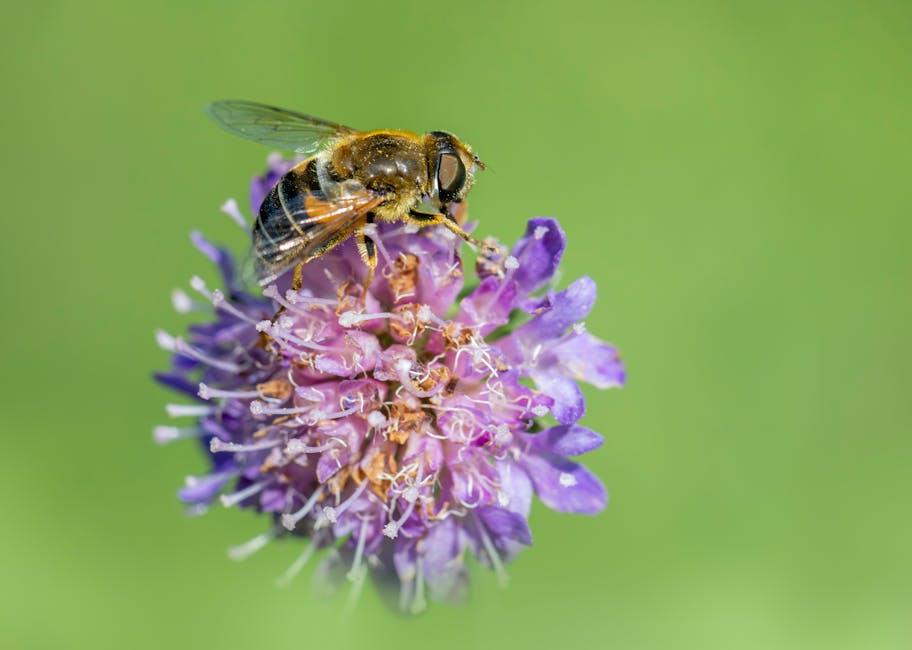In the intricate tapestry of our natural world, plants play a vital role in shaping ecosystems through their interactions with the environment and other organisms. From the towering giants of old-growth forests to the resilient succulents of arid deserts, plant ecology offers a fascinating glimpse into the interconnected web of life on Earth. Join us on a journey through diverse plant communities and unravel the intriguing examples of plant ecology that showcase the beauty and complexity of nature’s design.
Table of Contents
- Exploring Plant Coevolution in Diverse Ecosystems
- Interconnectedness of Plants and Their Microbiomes
- Adaptations of Plants in Extreme Environments
- Enhancing Biodiversity Through Plant Community Restoration
- Q&A
- In Summary
Exploring Plant Coevolution in Diverse Ecosystems
In the realm of plant ecology, examples of plant coevolution in diverse ecosystems showcase the remarkable relationships between plants and their surrounding environment. One fascinating instance is the coevolution between flowering plants and their pollinators. Through a reciprocal process of adaptation, plants develop unique characteristics to attract specific pollinators, while the pollinators, in turn, evolve traits that facilitate efficient pollination.
Another captivating example is the coevolution between plants and mycorrhizal fungi. These symbiotic relationships highlight how plants and fungi exchange essential nutrients, with plants providing sugars to the fungi in exchange for increased nutrient absorption. This intricate dance between plants and mycorrhizal fungi demonstrates the interconnectedness of species within ecosystems, emphasizing the importance of studying and preserving these delicate balances.


Interconnectedness of Plants and Their Microbiomes
Plants and their microbiomes share a complex and fascinating relationship that highlights the intricate interconnectedness of the natural world. This symbiotic bond goes beyond the surface, delving into the very foundation of plant ecology. Here are some captivating examples that showcase the profound impact of this relationship:
- Nitrogen Fixation: Certain bacteria, like Rhizobia, form nodules on the roots of leguminous plants, such as soybeans and peas. These bacteria convert nitrogen from the air into a form that plants can use, enhancing soil fertility.
- Pathogen Resistance: Beneficial microbes living on plant surfaces can outcompete harmful pathogens, acting as a natural defense mechanism for the plant. This dynamic helps prevent diseases and promotes overall plant health.
Exploring the intricate details of how plants and their microbiomes interact opens up a world of discovery and appreciation for the delicate balance that sustains ecosystems. By recognizing and nurturing this interconnected relationship, we gain a deeper understanding of the complexities of plant ecology and the vital role that microbiomes play in shaping the health and resilience of plant life.
| Plant | Microbiome Interaction |
|---|---|
| Sunflowers | Attract beneficial bacteria that enhance nutrient uptake. |
| Tomatoes | Benefit from mycorrhizal fungi which improve root health. |


Adaptations of Plants in Extreme Environments
Plants have developed remarkable strategies to thrive in extreme environments, showcasing nature’s ingenuity at its finest. From the icy expanses of polar regions to the scorching heat of deserts, plant adaptations never cease to amaze. In challenging terrains where resources are scarce, plants have evolved unique features to ensure their survival.
In the unforgiving desert landscape, plants such as cacti have adapted by storing water in their succulent tissues, allowing them to endure long periods of drought. Additionally, their shallow but widespread root systems efficiently capture water from infrequent rains. In contrast, polar plants like Arctic mosses have adapted by growing low to the ground to reduce exposure to harsh winds and retain heat. Their ability to photosynthesize even at low temperatures is a testament to their resilience in extreme cold. These adaptations not only highlight the diversity of plant ecology but also underscore the incredible ways in which plants have evolved to conquer extreme environments.
/ CSS styling for WordPress table /table { border-collapse: collapse; width: 100%; border: 1px solid #ddd;}th, td { text-align: left; padding: 8px;}
th { background-color: #f2f2f2;}
| Plant Adaptations | Extreme Environment |
|---|---|
| Water storage in succulent tissues | Desert |
| Low growth to reduce exposure to winds | Polar regions |
the serve as a testament to their ability to not just survive but thrive in conditions that would seem inhospitable to most living beings. By evolving specialized traits and mechanisms, plants have carved out their niche in some of the harshest environments on Earth, showcasing the beauty and resilience of nature in the face of adversity.

Enhancing Biodiversity Through Plant Community Restoration
In the intricate tapestry of ecosystems, plants play a foundational role in shaping biodiversity. Through thoughtful plant community restoration efforts, we can witness nature’s resilience and regeneration in action. By reintroducing native plant species to degraded landscapes, we provide vital habitats for wildlife, support pollinators, and enhance the overall health of the environment.
Diverse plant communities not only contribute to the beauty of our surroundings but also offer a myriad of ecosystem services. From improving soil quality to mitigating climate change through carbon sequestration, each plant species has a unique role to play. Embracing the interconnectedness of flora and fauna, we embark on a journey to restore balance and foster a thriving environment for generations to come. Let’s cherish and nurture these plant ecology examples, celebrating the wonders of nature’s intricate web.
Q&A
Q: What are some fascinating plant ecology examples that showcase the intricate relationship between plants and their environment?
A: Discover how the Venus flytrap captivates with its carnivorous nature, adapting to nutrient-poor soils by trapping insects for sustenance.
Q: How do epiphytes exemplify plant ecology in action?
A: Learn how epiphytes like orchids and bromeliads thrive perched on trees, showcasing their symbiotic relationships and unique adaptations to gather nutrients from the air.
Q: Can you explain the significance of mangroves in plant ecology?
A: Dive into the world of mangroves, where these salt-tolerant plants play a crucial role in coastal ecosystems by protecting shorelines, providing habitats for diverse species, and filtering pollutants from the water.
Q: What role do mycorrhizal fungi play in plant ecology?
A: Uncover the underground network of mycorrhizal fungi, enhancing plant nutrient uptake and promoting symbiotic relationships between fungi and roots, highlighting the interconnected web of life in plant ecosystems.
Q: How do desert plants illustrate adaptation in plant ecology?
A: Explore the resilience of desert plants like cacti and succulents, showcasing their water-storing abilities, reduced leaf surfaces, and spiny defenses as remarkable adaptations to survive arid conditions, exemplifying nature’s creativity in challenging environments.
In Summary
As the intricate dance of plant ecology unfolds around us, it’s evident that nature’s tapestry is woven with stunning diversity and interconnectivity. From the towering redwoods of California to the delicate orchids of the Amazon rainforest, plants play a vital role in shaping our world. By delving into these plant ecology examples, we gain a deeper appreciation for the harmony and balance found in the natural world.
Let these examples inspire you to observe the subtle interactions of plants in your own surroundings, whether it’s the resilient wildflowers peeking through sidewalk cracks or the majestic oaks shading a meadow. As we cultivate a deeper understanding of plant ecology, we become better stewards of the planet we call home.
So, take a moment to pause and reflect on the wonders of plant life that surround you, for every leaf, petal, and stem has a story to tell. Let us continue to marvel at the beauty of plant ecology and strive to protect and preserve it for generations to come.



0 Comments